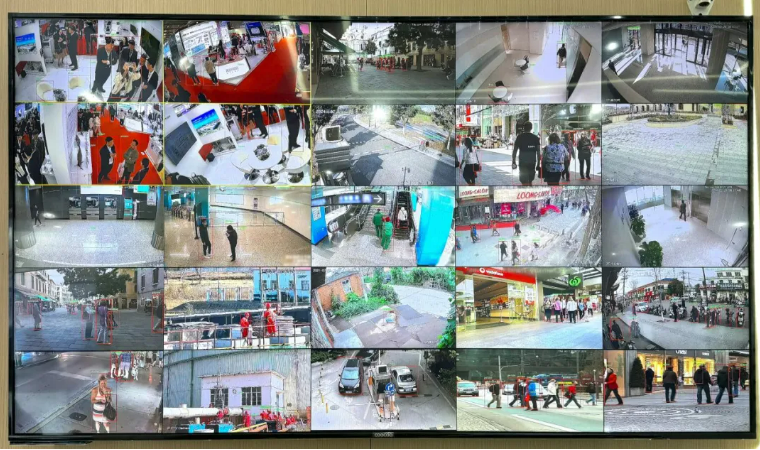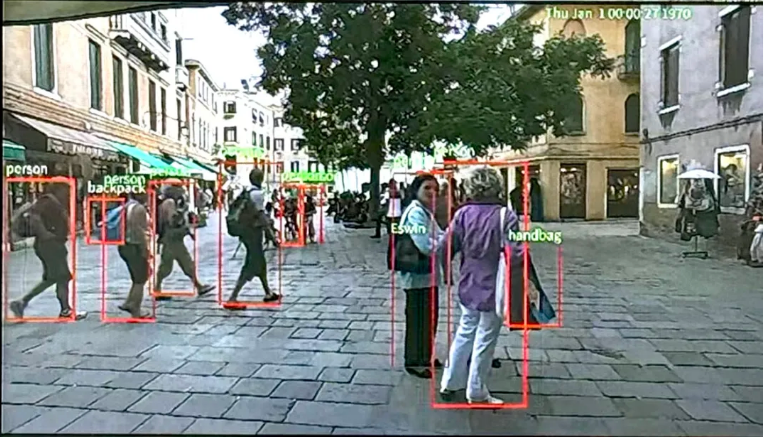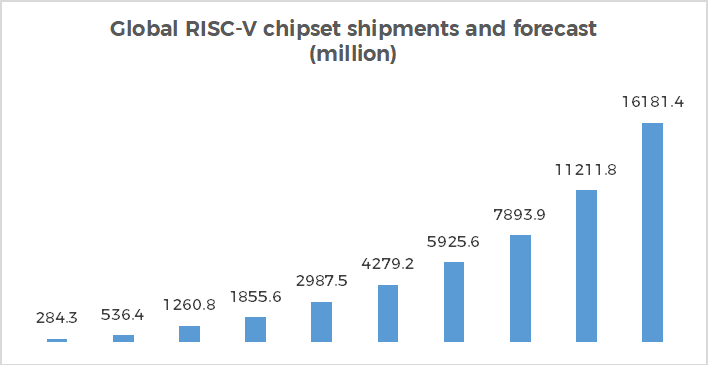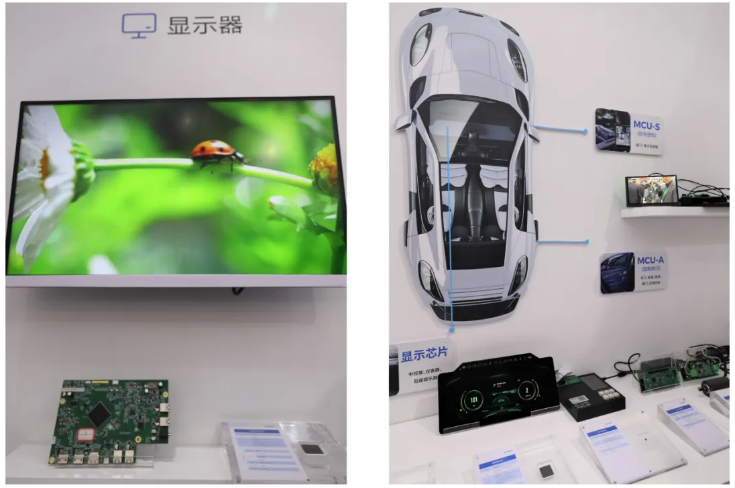SEMICON China 2024, a top event in the semiconductor industry, opened in Shanghai New International Expo Centre on March 20. As a next-generation computing architecture IC and solution provider, ESWIN Computing brings a wide variety of ICs, boards, and solutions in the fields of industrial appliances, automotive, and consumer electronics, fully demonstrating its innovation achievements in RISC-V technology and products.
As computing power is now a key factor of production in the digital age, RISC-V is embracing new opportunity and extending from IoT to edge computing and further to AI computing, high-performance computing, and other fields. It is therefore considered the “third pole” in building a computing power ecosystem. At the event, ESWIN Computing exhibits the world’s first RISC-V edge computing SoC – the EIC7700 and the RISC-V AI PC chip – the EIC7902, and also showcases their extraordinary multichannel real-time image codec and AI reasoning capabilities. The two products are impressive additions to the RISC-V chip family.


Live demo of the EIC7700, the world’s first RISC-V edge computing SoC
He Ning, Senior Vice President and Chief Technology Officer of ESWIN Computing, said, “In the past, the RISC-V architecture was primarily applied in the IoT space, but in the last two years, RISC-V has been implemented in a broader range of ecosystem scenarios. According to the latest forecast of the global technology intelligence firm ABI Research, annual shipments of RISC-V edge AI chipsets will reach 129 million by 2030. China has huge advantages in application innovation. We believe that if the industry comes together in hardware development, software adaptation, and system applications, the RISC-V architecture will be implemented at a faster pace, especially in the fields of AI computing and new generation digital infrastructure. ”
Deep integration of RISC-V and AI supports high-precision LLMs
Amid the wave of AI, more AI large language models (LLMs) with multimodal capabilities are emerging, and AI reasoning chips become the center of attention in the market, which are expected to support the efficient building and application of LLMs. The RISC-V computing architecture are open, flexible, streamlined, and scalable, and these advantages provide ample space for the development of high-performance, power-efficient edge-side and endpoint-side AI reasoning chips.
ESWIN Computing pioneered in launching the EIC7700, the world’s first RISC-V edge computing SoC.
The EIC7700 is packed with upgrades across multiple indicators. It adopts a 4-core 64-bit RISC-V out-of-order processor and the company’s independently developed power-efficient NPU matrix and vector computing module, and supports large language models. The DNN processor provides computing power of 13.3 TOPS at INT8 precision, which can meet the needs for classification, detection, segmentation, and tracking. It has strong codec capabilities that support 32-channel 1080p 30-frame video decoding and 13-channel 1080p 30-frame video encoding, and can be paralleled with the reasoning function. The image signal processor (ISP) has multiple hardware acceleration functions for image processing, such as image enhancement, dynamic contrast enhancement, and distortion correction, and offers a rich set of external interfaces for multimedia input and output, PCIe, and Ethernet.
To accelerate the application of edge computing, the EIC7700 comes in three forms: IC, PCIe board, and smart AI edge station. It supports AI high-precision large language models and provides high-performance, power-efficient AI solutions for security operations, smart manufacturing, smart education, and other application scenarios.
In 2024, which marks the dawn of the AI PC era, companies are vying with each other on the battlefield of AI PC chips. After thorough preparation, ESWIN Computing took the lead in launching the EIC7902-C, the world’s first RISC-V AI PC chip with more hardware functional units, demonstrating the infinite potential of RISC-V in the field of AI PCs.
The EIC7902-C adopts an 8-core 64-bit out-of-order RISC-V processor and the company’s self-developed power-efficient NPU matrix and vector computing module, delivering higher performance in computing power, memory capacity, and bandwidth. The DNN offers 26.6 computing power of TOPS at INT8 precision, which is conducive to local AI deployments and further improves the interaction experience and efficiency. In addition, multiple EIC7902-C chips can achieve greater computing power through PCIe cascading, which are suitable for application scenarios with higher requirements for computing power, such as cloud acceleration.
To build a next-generation AI engine based on RISC-V requires collaboration in the building of a RISC-V AI application ecosystem in addition to “acceleration” at the hardware level. Dr. He Ning pointed out that the current AI computing landscape is still short of basic software for RISC-V, especially the compilation software framework, AI application software for RISC-V is underdiversified, and enormous inputs are needed for application migration and optimization. Therefore, the entire RISC-V industry chain should work together for win-win outcomes. Chip manufacturers need to have a good grasp of AI application requirements and make full use of the modularity and scalability of RISC-V to design custom products with higher energy efficiency and at lower costs. Chip manufacturers and software companies need to collaborate to develop basic software, improve the adaptability of the operating system to RISC-V, and provide compilers and toolkits with adequate capabilities. At the solution level, hardware and software companies need to jointly promote the deep integration and optimization of chips, devices, basic software, and application software and expand the coverage of application solutions.
Featured products reflect remarkable RISC-V full-stack technical capabilities
As an open source instruction set architecture (ISA), RISC-V is emerging as the third mainstream computing architecture alongside x86 and ARM. The RISC-V space now sees a growing number of global players as well as countless developers. According to the latest research by the leading consultancy SHD Group, annual shipments of RISC-V chipsets are projected to exceed 1.8 billion in 2024 and 16 billion in 2030, with a compound annual growth rate of over 40%.

Source: The SHD Group, January 2024.
Chinese companies undoubtedly play a major role in the RISC-V ecosystem. China’s RISC-V market has grown from the ground up and reached the stage of rapid development. ESWIN Computing is committed to conducting independent research and development of the RISC-V computing architecture and to promoting the large-scale application of chip products based on the RISC-V architecture. Targeting application scenarios such as automotive, household appliances, display, and industry, ESWIN Computing offers a full range of chips and solutions such as multimedia systems, display interaction, intelligent computing, smart connectivity, in-vehicle systems, intelligent computing, and power management.
ESWIN Computing has built a full-stack platform integrating software and hardware and independently developed a full line of 32-bit and 64-bit RISC-V CPU IPs, including the 3, 5, and 7 series. Its product matrix meets the requirements of diversified products for low power consumption, low cost, high cost-effectiveness, high energy efficiency, and high performance. In terms of technology, ESWIN Computing adopts 3/6/9/12-level pipelining schemes and customized configuration schemes to meet the requirements for power, performance, and area (PPA) in different application scenarios. It also offers RISC-V CPU IP security solutions that can enhance the information security protection capabilities.
At the ongoing SEMICON China 2024, ESWIN Computing presents a legion of cutting-edge products including the development board equipped with its self-developed 3-series 32-bit and 5-series 64-bit RISC-V CPU IPs, self-developed RISC-V CPU IP and highly integrated automotive motor MCUs, the first automotive LCD display PMIC in China, the first Camera Monitor System (CMS) solution with tight coupling architecture in China, and 4K 144Hz high-performance smart TV SoC for accurate depth-of-field image processing. With a growing lineup of technologies and products, in 2023, ESWIN Computing commanded the largest market share of midsize and large display driver ICs for TV, monitor, and laptop, came in third in China by market share of 5G small base station RF transceiver ICs, ranked first worldwide by market share of Mini LED backlight control ICs, and topped the country by shipments and technical strength of self-developed RISC-V core chips.
 A wide range of chips and solutions exhibited by ESWIN Computing
A wide range of chips and solutions exhibited by ESWIN Computing
As testified by various dynamics and achievements, RISC-V performance is constantly pushing the envelope, and ESWIN Computing is establishing a moat in the RISC-V space.
To push RISC-V further forward, He Ning went on to promise that ESWIN Computing will continuously strengthen the RISC-V architecture R&D, product implementation, and ecosystem building; especially in the field of intelligent computing, it will give full play to the advantages of the RISC-V architecture and promote the integration with AI to build a new RISC-V AI ecosystem. On one hand, the company will ramp up its capacity to build RISC-V CPU cores and optimize the core architecture according to product requirements so as to enhance product competitiveness. On the other hand, it will provide competitive products that embody the advantages of the RISC-V architecture in a move to increase the confidence and trust of customers. Furthermore, ESWIN Computing will lay greater emphasis on application scenarios and deepen cooperation with equipment and system companies to promote the adoption of RISC-V products in industry verticals and expedite the building of the RISC-V ecosystem through applications.
(Source: ijiwei.com)

